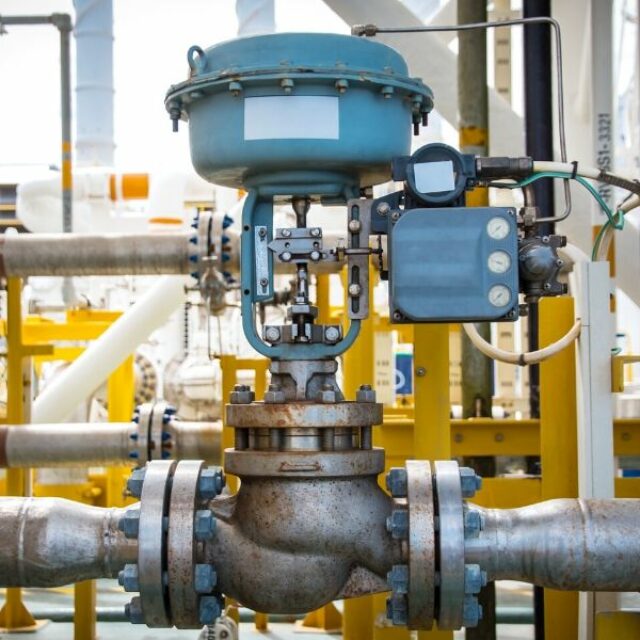Comprehending the Value of Control Valves in Process Automation
Comprehending the Value of Control Valves in Process Automation
Blog Article
Achieve Seamless Assimilation and Control With High Quality Structure Automation Controls
In the world of modern structure administration, the importance of quality structure automation controls can not be overstated. Embracing quality structure automation controls is not simply an issue of convenience yet a critical imperative for companies intending to maximize their centers' performance and sustainability.

Evolution of Structure Automation Controls
Throughout the past couple of years, the evolution of constructing automation controls has actually dramatically changed the means buildings are taken care of and operated. Constructing automation systems primarily concentrated on fundamental functions such as managing home heating, air, and air flow conditioning (HVAC) systems. Nevertheless, as technology progressed, these controls have actually come to be much more innovative, enabling a broader array of structure systems to be incorporated and taken care of centrally.
The development of constructing automation controls has seen a shift in the direction of even more intelligent systems that can adjust to altering conditions in real-time. This adaptability is vital for enhancing energy performance and making certain passenger convenience. In addition, modern structure automation controls currently provide attributes such as predictive upkeep, remote tracking, and data analytics, allowing facility supervisors to make data-driven choices to boost building efficiency.

Benefits of Top Quality Integration
The development in structure automation controls towards even more intelligent systems has underscored the significant benefits of quality integration in enhancing structure operations and improving general effectiveness. This centralized control also offers better presence and understandings into building efficiency, making it possible for proactive maintenance and optimization strategies. Overall, the advantages of top quality assimilation in structure automation controls are obvious, offering enhanced efficiency, comfort, and operational efficiency.
Enhanced Individual Experience and Availability
Enhancing user interaction with structure automation regulates via user-friendly style and boosted availability elevates the general experience for occupants and center supervisors alike. By focusing on customer experience, developing automation systems can become a lot more efficient and straightforward. User-friendly user interfaces, clear navigating, and personalized settings encourage users to engage with the controls conveniently and properly.
Ease of access functions play a vital duty in guaranteeing that all people, consisting of those with impairments, can make use of the building automation manages with ease. Integrating functions such as voice commands, responsive switches, and color-contrasted displays can enhance availability and make the controls much more inclusive.
In addition, improved individual experience here leads to higher user satisfaction, enhanced efficiency, and much better decision-making. Passengers can change ecological setups according to their choices, while center supervisors can successfully keep track of and handle building systems - control valves. In general, prioritizing individual experience and access in structure automation regulates adds to a more productive and seamless structure setting for all stakeholders included
Lasting Practices Via Automation

Additionally, More Help automation can help with the assimilation of sustainable power sources such as photovoltaic panels or wind turbines right into structure operations. By instantly changing power usage based upon the availability of renewable power, structures can additionally reduce their reliance on non-renewable sources. This smooth integration of sustainable methods not just benefits the setting however additionally improves the total operational performance and cost-effectiveness of the building. Via automation, structures can line up with modern-day sustainability goals and contribute to a greener future.
Future Trends in Building Control Equipment
One famous pattern shaping the future of building control systems is the increased integration of Artificial Knowledge (AI) and equipment learning. In addition, the Net of Points (IoT) is transforming building control systems by attaching tools and sensors to simplify procedures and boost efficiency.
One more vital fad is the emphasis on cybersecurity actions to protect versus possible dangers to building automation systems. As structures become a lot more interconnected, making certain durable cybersecurity protocols will be necessary to secure delicate information and prevent unauthorized gain access to.
Additionally, the change in the direction of cloud-based systems is obtaining momentum, enabling for systematized control and remote access to structure systems. This promotes easier surveillance, upkeep, and updates, boosting the overall efficiency and flexibility of structure control systems. As innovation remains to development, these fads are expected to form the future landscape of structure automation controls, driving technology and sustainability in the developed setting.
Conclusion
Finally, building automation controls have evolved dramatically, offering countless advantages such as boosted customer experience, availability, and sustainable practices. Quality integration plays a crucial role in accomplishing smooth control and reliable operation of structure systems. Future patterns in structure control systems are see this most likely to concentrate on more enhancing automation abilities for enhanced power efficiency and overall efficiency. It is essential for structure proprietors and operators to focus on the fostering of high quality building automation regulates to enhance structure operations and attain long-term sustainability objectives.
In the world of modern structure administration, the value of top quality building automation controls can not be overstated. In general, the development of building automation manages proceeds to drive technology in the structure management industry, providing new opportunities for creating smarter and extra sustainable structures.
The improvement in building automation controls towards even more smart systems has actually underscored the considerable benefits of top quality integration in maximizing building operations and enhancing overall effectiveness. In general, focusing on customer experience and ease of access in structure automation manages adds to a much more seamless and efficient structure environment for all stakeholders included.
It is necessary for structure proprietors and drivers to focus on the adoption of top quality building automation controls to enhance building operations and achieve long-term sustainability objectives. - control valves
Report this page